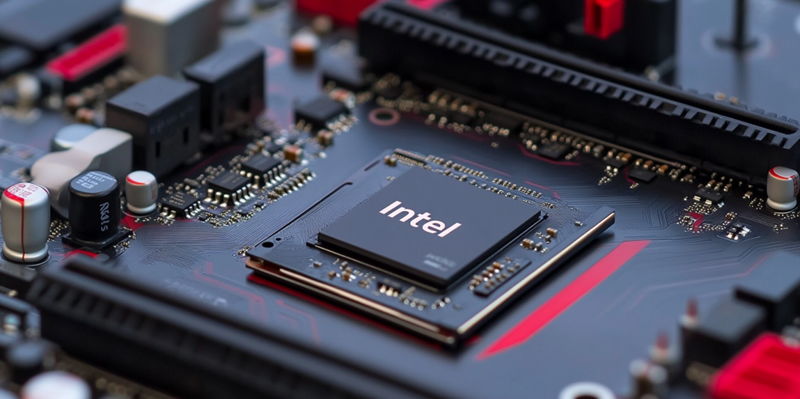In a significant move for the gaming GPU market, Intel is preparing to launch its next-generation Arc Battlemage "Xe2" discrete GPUs in December, seemingly ahead of the expected releases from NVIDIA and AMD. This development marks a critical step in Intel’s ongoing efforts to capture a share of the gaming GPU market, following the company’s previous initiatives in this competitive sector. Initially rumored for a November release, new information from data miner Tomasz Gawroński suggests a December launch, a timeframe reinforced by Intel’s official teaser.
Intel’s Battle Plan with Arc Battlemage "Xe2"
Anticipated Specifications and Innovations
One of the most compelling aspects of Intel’s upcoming Arc Battlemage GPUs is their technical specifications. These GPUs are based on TSMC’s advanced 4nm process, which is expected to deliver significant improvements in performance and efficiency. The Battlemage lineup will feature up to 32 Xe2 cores, offering substantial computational power. Accompanying these cores will be 16 GB of memory, ensuring that the GPUs can handle the demands of modern gaming and related applications. Additionally, the GPUs will come with a 256-bit bus configuration, facilitating faster data transfer rates and improved overall performance.
Among the previously leaked models are BMG-G21, BMG-G10, and BMG-31, which promise a robust lineup catering to various performance and budget needs. These models highlight Intel’s strategic positioning of the Battlemage GPUs in the market. By launching a variety of models, Intel aims to cover a broad spectrum of users, from casual gamers to hardcore enthusiasts. This range of options is crucial for Intel if it seeks to make a significant impact against established competitors like NVIDIA and AMD. The December launch date is a deliberate strategy to coincide with the holiday season, potentially attracting buyers looking for the latest technology gifts.
Competitive Positioning and Market Impact
Intel’s strategy with the Arc Battlemage GPUs is clearly aimed at providing a competitive edge over NVIDIA’s "RTX 50" Blackwell and AMD’s "RDNA 4" GPUs, both of which are anticipated to launch in January 2025. By releasing its products ahead of these competitors, Intel hopes to capture the attention of consumers and gain an early foothold in the market. This timing is particularly crucial given the rapid pace of technological advancements and the short-lived nature of market dominance in the tech industry. An earlier launch allows Intel to leverage marketing campaigns and potentially steer buyers towards their new lineup.
The success of the Battlemage GPUs is seen as pivotal for Intel’s aspirations in the discrete GPU market. Unlike NVIDIA and AMD, which have long dominated this space, Intel is relatively new to the scene. However, the company has been making concerted efforts to establish its presence and credibility. The Battlemage GPUs, therefore, represent not just a product launch but a statement of intent from Intel. The outcomes of this launch will likely influence Intel’s future decisions and strategies in the GPU domain. If successful, it could pave the way for further development and innovation in Intel’s GPU offerings.
Future Roadmap and Strategic Shifts
Focus on Xe3 "Celestial" and Beyond
Looking beyond the immediate launch of the Battlemage GPUs, Intel’s future roadmap includes the development of the Xe3 "Celestial" GPUs. This next-generation lineup is expected to coincide with the launch of the Panther Lake mobile SoCs, indicating Intel’s continuous push in the GPU sector. However, while Intel remains committed to advancing GPU technology, there is a noticeable shift in focus towards integrated graphics solutions for its system-on-chips (SoCs). This strategic pivot suggests that Intel may prioritize integrated graphics over discrete GPUs in the coming years, particularly for desktop applications. This emphasis aligns with broader industry trends towards enhancing integrated solutions, which offer several advantages in terms of power efficiency and cost-effectiveness.
Balancing Discrete and Integrated Solutions
Intel is gearing up to make waves in the gaming GPU market with the anticipated release of its next-generation Arc Battlemage "Xe2" discrete GPUs in December. This launch is expected to occur before NVIDIA and AMD can unveil their next-gen GPUs, highlighting Intel’s strategic move to stake a claim in the highly competitive gaming GPU sector. Intel’s advancement with the Arc Battlemage GPUs signals a crucial step in the company’s ongoing effort to establish a meaningful presence in this market, following a series of previous initiatives aimed at carving out its own space in the industry.
There had been previous speculation that Intel would launch these GPUs in November, but recent insights from data miner Tomasz Gawroński now point to a December release. This information has been further substantiated by an official teaser from Intel, indicating a strong likelihood of a year-end launch. The release of the Arc Battlemage "Xe2" GPUs represents Intel’s continued commitment to innovation and competitiveness, as the company strives to rival established GPU giants NVIDIA and AMD.

